Everything She Ever Wanted Read online
Page 6
McBurnett did not yet have a description of the burglary suspect, but a running man near a crime scene couldn’t be ignored. He had just spun his car around and was heading back to apprehend the man when he heard a “Help the officer” call on the radio: “I’ve got a woman shot. The perpetrator is in the basement holding a hostage.”
McBurnett’s natural response was to go to the aid of his fellow officer, so he left off his pursuit of the running man and turned into the Allansons’ driveway just behind another patrol unit. Still, the image of that man stayed in his mind. He was wearing Levi’s, boots, and a green and brown striped shirt. McBurnett had no fix on the man’s size; he had been running hunched over. He could have been five feet ten inches tall—or six feet six.
When McBurnett arrived at the Allansons’ house, he found incredible chaos. A young woman was screaming and out of control; more and more police and EMTs were arriving, with their blue and red whirling bubble lights giving the night a psychedelic glow; and the falling rain made it seem like anything but the eve of the Fourth of July in the suburbs of Atlanta.
Sergeant William Vance and Detective J. E. Lambert noted gouge marks on the open basement door; it had probably been jimmied. They also saw a light on at the top of the steps, the bulb eerily spotlighting the body of the dead woman. The rest of the basement was bathed in shadows of black and gray. Lambert peered toward the heating and air-conditioning unit and thought he saw an arm protruding from behind it. Spooked, he fired his pistol in that direction.
The round hit something metal and clanged loudly, but there was no human movement. The arm had been only a shadow.
Captain J.D. Lynn ordered a canister of tear gas to be thrown into the basement, and all the doors were sealed. If there had been a burglar in the house on Callahan’s first visit an hour before, he might very well still be inside. The men surrounding the house fully believed they had a hostage situation.
They waited, officers poised at each of three exterior doors of the house and at all the windows. Five minutes. Ten minutes. No one bolted from the house, vomiting and blinded by the gas. After fifteen minutes, Lieutenant Thornhill, Detective Lambert, and Sergeant Vance donned oxygen masks provided by the East Point Fire Department and edged into the basement.
It was so hard to see; tears ran down their faces despite their masks and the fans the fire fighters had set up to air out the cellar. They stumbled over lumber and tools, a half-finished boat, a surfboard, a miniature railroad track mounted on a sheet of plywood. It was like anyone’s cellar, a repository for things to be used later, or things once used and no longer needed.
They could make out the white-clad body sitting on the basement steps, and, just opposite, behind the heating system, there was the brick base of a fireplace. It had a large rectangular hole in it—three feet high by about a foot and a half wide—easily large enough for a man to hide in. They had no idea how far back it went.
Outside the hole they found a bloodstained flashlight, turned off, and a .32-caliber pistol wedged between a surfboard and the plywood that held the electric train. Their own flashlights picked up a profusion of still-liquid puddles and droplets of blood on the floor around the hole in the base of the fireplace.
Back toward the stairs they located a .45/70 rifle and a crowbar near a stack of interior doors. Their tear-gassed eyes burned and blurred, but behind the doors they discerned what looked like a leg clad in blue pants.
They moved closer with their guns drawn.
CHAPTER 7
***
Captain Lynn ordered the uniformed division to fan out on foot to check the neighborhood for a suspect. At that point, they knew only that an older woman was dead. The young woman on the scene was too hysterical to be of much help, although they knew now that she was Carolyn Allanson, the ex-daughter-in-law of Walter Allanson. She repeated over and over that someone had been in the basement and Daddy Allanson had gone down to “get him.” She continued to babble about “Daddy” and “Mother.” Daddy had had someone “caught in the hole” and she had begged Mother Allanson not to go down in the cellar. Almost as an aside, the distraught woman said that she had seen “Tom’s new wife” driving around the block in her blue jeep. Beyond that, she was no help at all. When they tried to probe deeper, she lost control again. They couldn’t count on much of anything the woman said in her current state.
It was no secret to the East Point police that Walter Allanson and his son, Tom, had been feuding. They had heard rumors about an ambush up at Lake Lanier and Tom and Pat had been in to the police station only a few days before, trying to charge his father with indecent exposure. If Pat Allanson was in the neighborhood, the East Point police wanted to find her as quickly as possible. They had so little to go on as Captain Lynn, Sergeant R.W. Jones, and Sergeant Callahan drove their police cruisers in ever-widening circles around Norman Berry Drive, looking for anything that seemed unusual, for someone running, and for either Tom Allanson’s blue pickup truck or the blue jeep Pat had been seen driving.
The King Professional Building occupied the triangle of land just between Bayard Street and the point where Norman Berry Drive bisected Cleveland Avenue about three-tenths of a mile from the Allanson house. It was new construction, a many-storied concrete structure whose white fretwork panels made it resemble an out-of-place mosque. The wide cement parking apron was almost empty of cars at 8:20 on a rainy night, but the East Point officers spotted the blue jeep they were looking for parked there.
They suspected this was the vehicle Carolyn Allanson said she had seen; there was already a statewide want out on it—and on its alleged driver, Patricia Taylor Allanson. Callahan noted the license plate number, CY 242, a 1974 Georgia-issued plate. A quick radio check with “Wants and Warrants” elicited the information that the plate had been issued for a new jeep, purchased three months before in Marietta, Georgia, and that it indeed was registered to Patricia R. Taylor of the Kentwood Morgan Farm in Zebulon.
In the rapidly dimming light, the three policemen could make out the form of a woman sitting in the jeep. There was no way of knowing if she was alone, or if someone was crouching down beside her or behind her.
They leaped from their police unit and approached the jeep from behind with guns drawn. The woman in the vehicle didn’t move at all—not even to turn her head to glance at them.
“Get out of the jeep!” Callahan shouted. “Get out of the jeep with your hands up!”
For a moment there was no movement in the little blue ragtop jeep, and then a pretty, slender woman wearing a miniskirt and a halter top poked one bare leg out, slid to the ground, and turned to stare back at them. She held up one arm and gestured that she could not raise the other because it was injured.
“Anyone else in there?” Callahan called.
She shook her head.
“You sure?”
“I’m all alone.”
Callahan and Jones moved to either side of the woman they presumed to be Pat Allanson and led her into the police car. She didn’t resist, but she winced as if her shoulder hurt her.
“What is going on?” she asked. “What has happened? Where is Tom?”
“Are you Mrs. Allanson?”
“Yes.”
“Well, he shot his mother.”
Pat sagged a bit, and then said forcefully, “No, he couldn’t have shot his mother. Not Tom. Not my Tom!"
“Well, his ex-wife said he did.”
Pat didn’t care about what Tom’s ex-wife said. She insisted that if anybody did any shooting, it wouldn’t have been Tom.
At this point, they couldn’t argue with her. The only thing they could be sure of was that the elder Carolyn Allanson was dead. For all they knew at this point, Tom might be dead too and, as improbable as it seemed, they might be looking for Walter Allanson. The basement up the street had been so obscured by walls, doors, and junk that they couldn’t be sure of anything, and they hadn’t yet been informed about what the investigators back at the house might have found.
None of the police units circling the area had made any definite sightings of Tom. His new wife seemed to be in shock. All she knew was that she had been waiting for him for hours. She was worried sick—so much so that she had called her parents, Colonel and Mrs. Clifford Radcliffe, to come and be with her. She would, of course, be glad to talk with the officers about anything they wished—if only she could wait for her mother and daddy to get there.
She appeared panicked that the officers would remove her from the parking lot before her mother and father arrived. “Please don’t take me away. They’re on their way, and they won’t know where to find me if you take me away from here.”
She said she had no idea where her husband might be at the moment. He had been wearing a brown shirt, blue jeans, and cowboy boots when she last saw him.
“How tall is your husband, ma’am?” Lynn asked.
“Tall. Real tall—six foot three or better. He’s a very large man—but very gentle. I believe he weighs over two hundred pounds.”
Captain Lynn got on the radio and broadcast a BOLO (be on the lookout for) on Tom Allanson, giving the additional descriptive information on his appearance. The details fit the running man that Officer Cecil McBurnett had observed just after hearing the report of “Burglar in the house” at 1458 Norman Berry Drive. The man had been running toward the intersection of Cleveland and Norman Berry, and, incidentally, the King Building.
Of course, that man had been hunched over and no one knew how tall he was. Had it been Walter? Or Tom? There was no way Lynn could be sure. Tom had last been seen in blue Levi’s and, Callahan had said, Walter was wearing blue trousers when he talked to him earlier.
Lynn, Jones, and Callahan had far too much to do to wait for Pat Allanson’s parents. They took Pat with them as they drove slowly around the neighborhood. They stopped now and again to check garages where a shooter might be hiding.
Pat heard the radio chatter constantly and tried to understand the police codes. They had told her only that Tom’s mother was dead. Shot. They hadn’t said anything about Tom’s father. Or Tom. She bit her lip and stared nervously out the squad car’s window.
They turned from Cleveland onto Stewart Avenue and drove right past the very spot—Nalley’s Chevrolet*—where Pat’s brother, Kent, had died eight years earlier. Shot too. Pat looked away, her thoughts known only to herself.
After a while the police took Pat back to the King Building, where the colonel and her mother were waiting for her. Her mother took her hand, and the colonel demanded to know just what was going on and why his daughter was being detained.
The police retrieved Pat’s pocketbook and sewing things from the jeep, and they instructed the Radcliffes to follow them to the East Point Police Department. And there they waited, the three of them. The police were too busy even to talk to them.
Pat thought about sewing on her Fourth of July parade costume—just to keep her panic down—but there didn’t seem much point. Probably she and Tom wouldn’t be riding in the parade Saturday after all. She didn’t even know if Tom was alive.
The blue jeep was towed into the city garage. The detectives saw a container of take-out fried chicken in the front seat, and noted it along with their other observations.
***
Back at 1458 Norman Berry Drive, East Point officers had completed their search of the basement. Milford Carolyn Allanson still sat on the basement steps, shot through the heart. They had found another body there too. Walter Allanson lay on the floor parallel to the steps; his body had been hidden by the stack of doors. His new rifle was on the floor four feet from his body, and a few feet from the body of his wife. There was no way of telling which of them had fired the rifle, or if, indeed, either had. One round had been fired from it, and it was partially cocked with a live round half into the chamber.
Walter Allanson had obvious gunshot wounds in his face, neck, and torso. In all likelihood, it was his blood that had left trails of gore over half the basement—particularly near the hole in the base of the fireplace and then pooled beneath him as he bled out.
After Detective Marlin Humphrey, Jr., took photographs, Lambert, Vance, and Patrolman Bob Matthews removed the bodies of Walter and Carolyn Allanson, carrying the victims up the steps to be laid out on the wet grass of their side yard for more police photographs and to await transportation to South Fulton Hospital. They could not be declared legally dead without a physician; the bodies would then await postmortem examination.
Bob Matthews, who worked as an identification officer, bagged the .45/70 carbine rifle and the .32 pistol, which had six empty chambers. The investigators could not hope to do a thorough crime scene investigation until daylight, which was still hours away. Lieutenant Thornhill ordered the property cordoned off and stationed patrolmen to guard it until morning. They now knew what had happened. It would take them a long, long time before they knew how and why.
Jean Boggs, Walter Allanson's sister, hadn't felt well all day. She was standing at her stove fixing something to eat at 8:30 on the night of July 3 when a neighbor came to the back door. “I don’t want to frighten you, but I think something’s wrong at your brother’s house. Maybe you’d better call him. There are ambulances and police cars and everything up there.”
Alarmed, Jean heard the phone at Walter's house ring six, ten, twelve times with no answer. She didn’t know, of course, that the phone line was severed and the rings she heard were silent in her brother’s house. When she called Mae Mama’s house, a policeman answered and suggested that she had better go on down to her brother’s house. He wouldn’t tell her anything else, nor would the desk sergeant at the East Point police station. That scared her. Her husband wasn’t home, but her neighbor said he would drive her over to Walter and Carolyn’s place.
“When we got up there,” Jean said later, “I remember seeing oodles and oodles of people going up and down the bank where my brother lived and up and down the driveway—many strangers. I also remember seeing a television station there . . . Channel Five.”
Jean walked up to a policeman who was holding people back with his extended arms. When she told him who she was, he summoned Captain Lynn, who listened quietly to her concerns.
“Ma’am, all I can tell you is that he [Walter] has been shot.”
“Shot? . . . What about Carolyn—Carolyn, Walter’s wife?”
“She has been shot too.” Jean Boggs’s knees buckled as she heard Lynn say, “They have been carried to South Fulton Hospital and I would recommend that you go there.”
Jean didn’t get much more information at the hospital, which was only two blocks away. The receptionist summoned a nurse and Jean begged, “Please tell me something. Just not knowing is killing me.”
The nurse turned and went down a corridor, and another nurse appeared.
“Could I see my brother and sister-in-law?”
“No. Two bodies are just arriving back there and they have not been identified, and that is all I can tell you. You’ll have to wait for a detective to get here.” Both nurses seemed upset, and they evaded all Jean’s desperate pleas for information.
It was a nightmare. Jean demanded to see Lieutenant Thornhill, who she had been told was in charge. She knew Gus Thornhill. Surely he would be straight with her. She would identify her brother and sister-in-law. Who else was there? Her parents were too old to go through this, and she didn’t even know where her nephew Tommy lived now.
Thornhill hurried over, and when Jean saw him he was holding Carolyn Allanson’s driver’s license in his hand. Her heart turned over. “Are Walter and Carolyn back there dead?” she breathed.
“Yes.”
“Can I see them?”
“Mrs. Boggs.” Thornhill looked away from her and took a deep breath. “I have known you a long time, and I feel like a friend of yours. I’m going to ask you out of friendship not to go and look.”
“What happened?”
“Tom killed them. . . .”
No. NO! Tommy wouldn
’t do that. It didn’t make any sense to Jean. Vaguely, she was aware of a television set in the background. The shootings were already on the news. Everyone was looking for her nephew, Tommy, who was believed to be wounded. All Jean could think was, My Lord, I will have three to bury instead of two.
And then Jean realized that she had to get to her parents and tell them before they turned on the television. It would kill Paw and Nona to hear it like that. Gus Thornhill said he would drive her to the elder Allansons’.
As Thornhill and Jean Boggs left the hospital, they passed an ambulance parked at the ER doors. One of the two back doors was open and Jean saw a body covered by a bloodied sheet. One bare foot stuck out. Transfixed with horror, she was drawn toward the ambulance. It took both Thornhill and her neighbor to pull her away. “Gus, I want the truth,” Jean said. “Is that Walter? Is that my brother?”
“Yes, ma’am, but I must still ask you not to look.”
When Jean and Gus Thornhill reached the elder Allansons’ place on Washington Road, she asked her father to sit down, but he stood, resolute, braced, an old man who had known tragedy before and survived it.
“Paw,” Jean said softly. “Walter and Carolyn have been killed—I don’t know any way to break this to you any gentler—and they’re looking for Tommy, Paw.”
Paw’s first words were hollow. “Well, I have been expecting something like this.”
When they told Nona, she began to scream and scream. Her physician, Dr. Lanier Jones, came over to give her a shot so she could sleep.
Paw was worried sick about what might have happened to “the boy.” He called down to Kentwood and the phone rang twenty times, an empty sound in an empty house. He would keep trying until he got Tommy on the line. When Jean finally got home, she realized that she was still clutching an envelope they had given her at the hospital. She stared at it blankly, wondering what it could be. “I dumped the contents of the package I had into my hand,” she later recalled, “and it was my sister-in-law's rings and they were just coated with blood, and with that I said, ‘Oh my God, I just can’t stand any more!’ ”

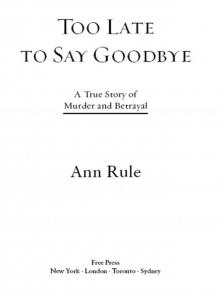 Too Late to Say Goodbye: A True Story of Murder and Betrayal
Too Late to Say Goodbye: A True Story of Murder and Betrayal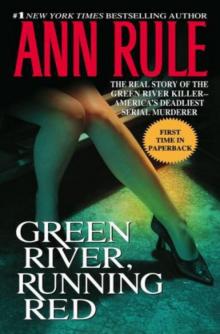 Green River, Running Red
Green River, Running Red Bitter Harvest
Bitter Harvest Dead by Sunset: Perfect Husband, Perfect Killer?
Dead by Sunset: Perfect Husband, Perfect Killer?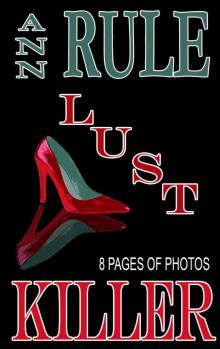 Lust Killer
Lust Killer And Never Let Her Go: Thomas Capano: The Deadly Seducer
And Never Let Her Go: Thomas Capano: The Deadly Seducer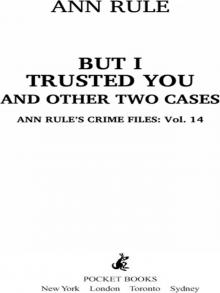 But I Trusted You and Other True Cases
But I Trusted You and Other True Cases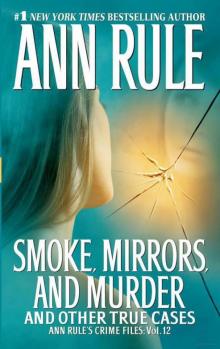 Smoke, Mirrors, and Murder and Other True Cases
Smoke, Mirrors, and Murder and Other True Cases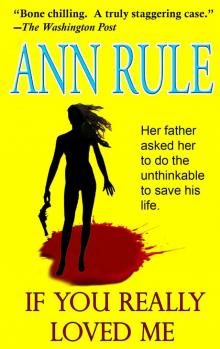 If You Really Loved Me
If You Really Loved Me Kiss Me, Kill Me and Other True Cases
Kiss Me, Kill Me and Other True Cases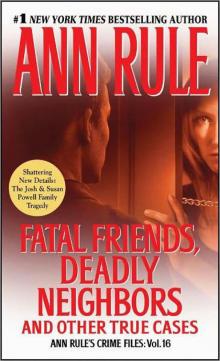 Fatal Friends, Deadly Neighbors and Other True Cases
Fatal Friends, Deadly Neighbors and Other True Cases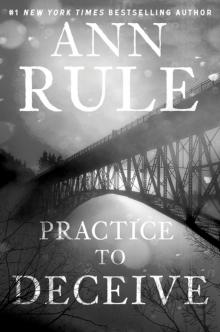 Practice to Deceive
Practice to Deceive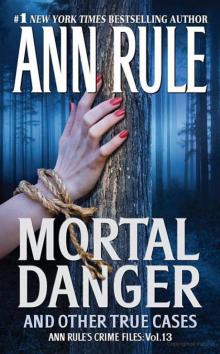 Mortal Danger and Other True Cases
Mortal Danger and Other True Cases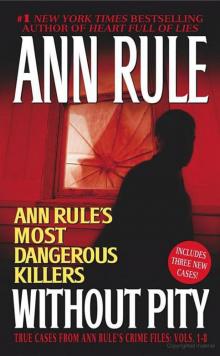 Without Pity: Ann Rule's Most Dangerous Killers
Without Pity: Ann Rule's Most Dangerous Killers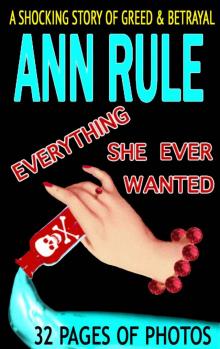 Everything She Ever Wanted
Everything She Ever Wanted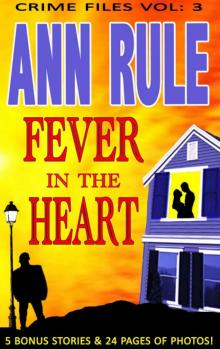 A Fever in the Heart and Other True Cases
A Fever in the Heart and Other True Cases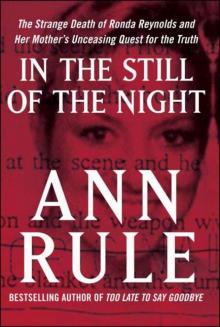 In the Still of the Night
In the Still of the Night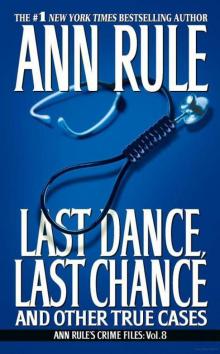 LAST DANCE, LAST CHANCE - and Other True Cases
LAST DANCE, LAST CHANCE - and Other True Cases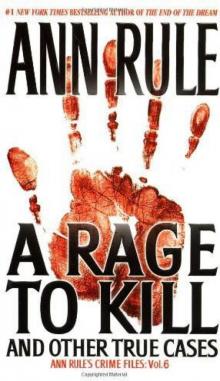 A Rage to Kill
A Rage to Kill The I-5 Killer
The I-5 Killer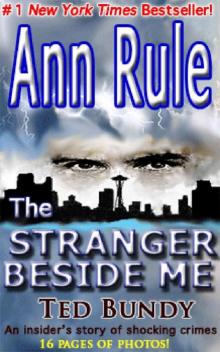 The Stranger Beside Me
The Stranger Beside Me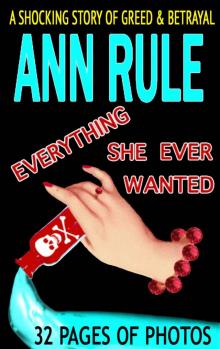 Everything She Ever Wanted: A True Story of Obsessive Love, Murder, and Betrayal
Everything She Ever Wanted: A True Story of Obsessive Love, Murder, and Betrayal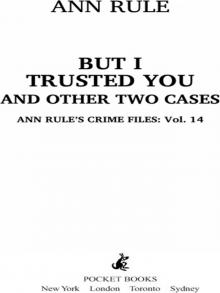 But I Trusted You
But I Trusted You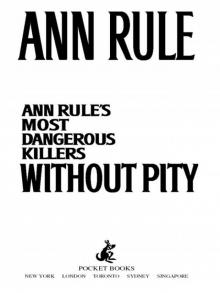 Without Pity
Without Pity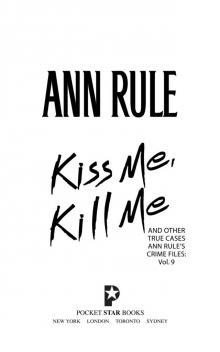 Kiss Me, Kill Me
Kiss Me, Kill Me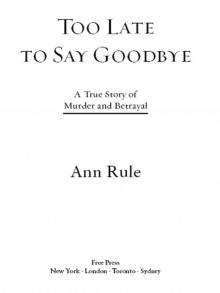 Too Late to Say Goodbye
Too Late to Say Goodbye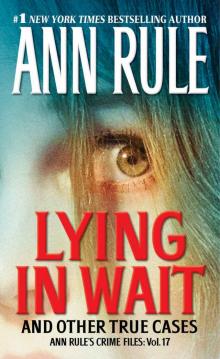 Lying in Wait
Lying in Wait Fatal Friends, Deadly Neighbors
Fatal Friends, Deadly Neighbors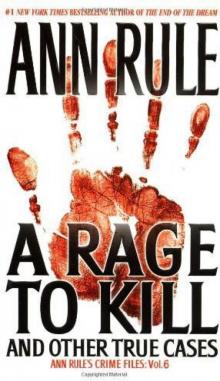 A Rage to Kill: And Other True Cases
A Rage to Kill: And Other True Cases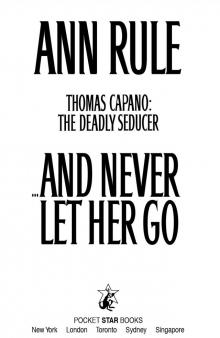 And Never Let Her Go
And Never Let Her Go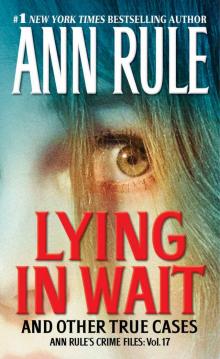 Lying in Wait Ann Rule's Crime Files Vol.17
Lying in Wait Ann Rule's Crime Files Vol.17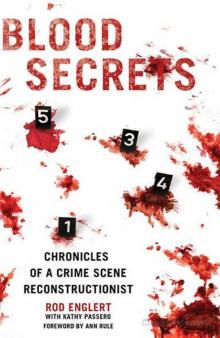 Blood Secrets: Chronicles of a Crime Scene Reconstructionist
Blood Secrets: Chronicles of a Crime Scene Reconstructionist No Regrets
No Regrets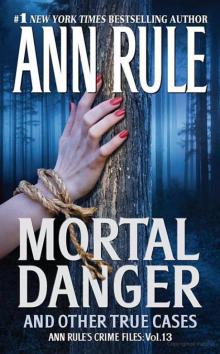 Mortal Danger
Mortal Danger But I Trusted You: Ann Rule's Crime Files #14
But I Trusted You: Ann Rule's Crime Files #14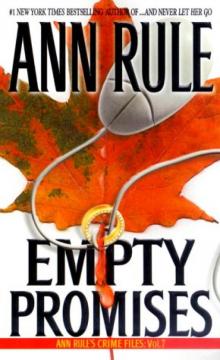 Empty Promises
Empty Promises Dead by Sunset
Dead by Sunset Last Dance, Last Chance
Last Dance, Last Chance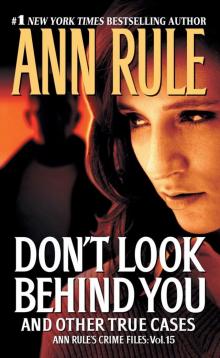 Don't Look Behind You
Don't Look Behind You